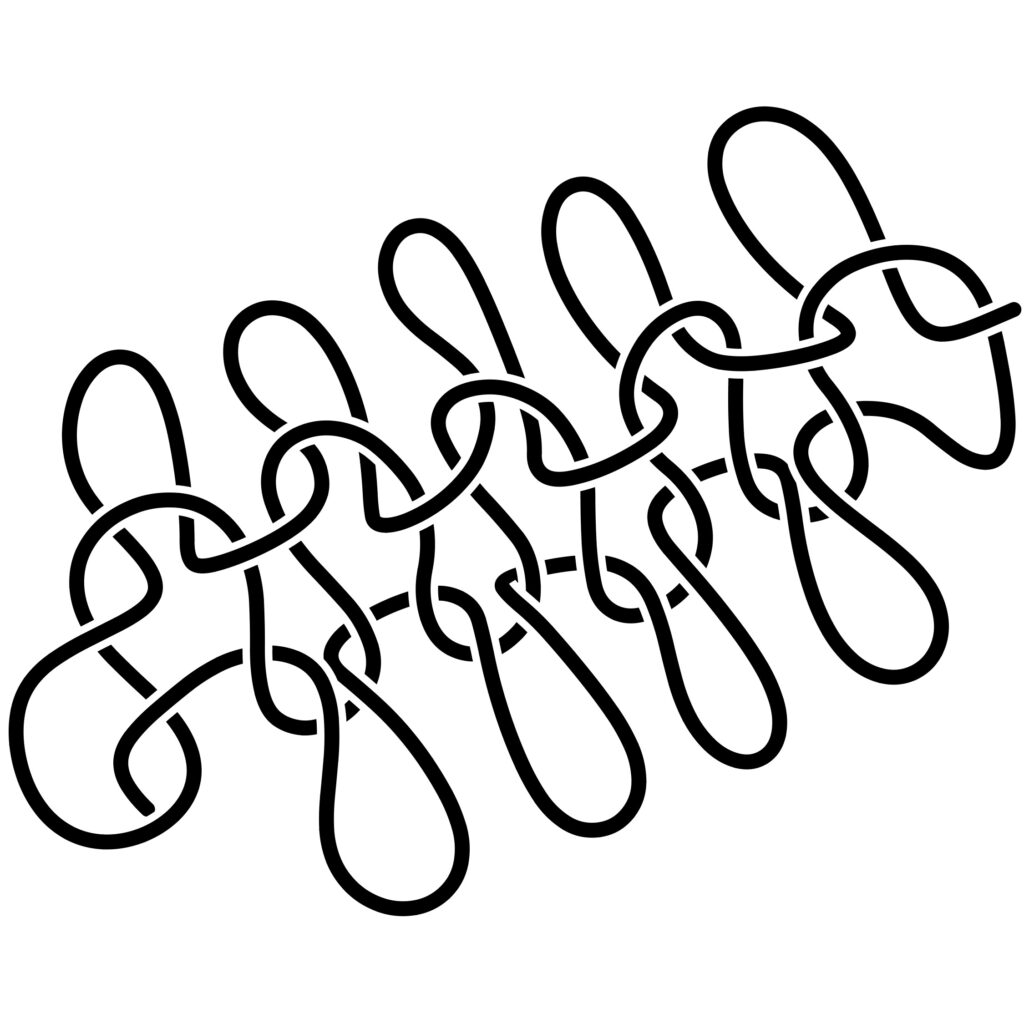Chapter 6: Weaving and Knitting

Is weaving the harbinger of culture? Adam and Eve were naked and unashamed, but clothes can warm in cold weather and look great on wedding day. And almost all of these clothes are made of fabric that is built on a pattern of threads passing over and under one another. The different patterns give fabrics with different properties — drape, hand, etc.
Weaving works so well we might expect to see it in the natural world. But the regular patterns we make seem to be uniquely human — they aren’t found elsewhere in nature.
Given our ability to manipulate molecules, and the utility of weaving at the human scale, we are compelled to consider it on the nano scale — who knows what we might do with molecular woven fabric. At this point in time nano-weaving can make you an impervious shield in a video game, but it is not yet been effected in the real world. We will find one reason why.
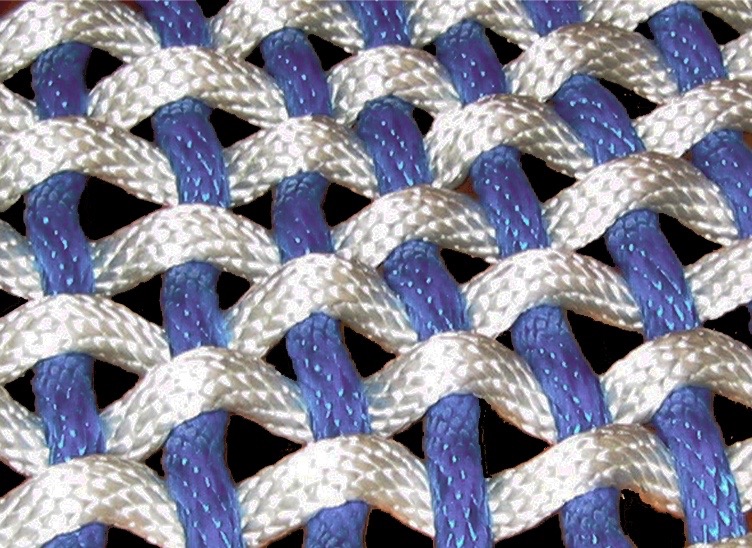
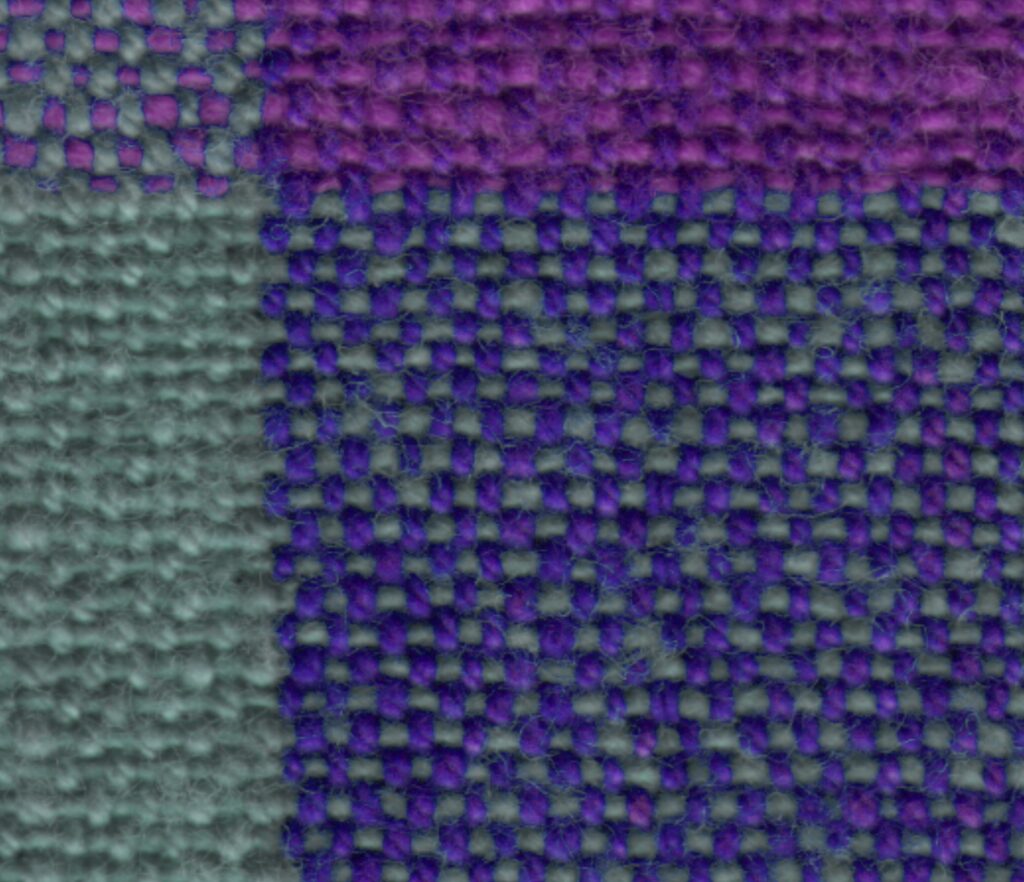
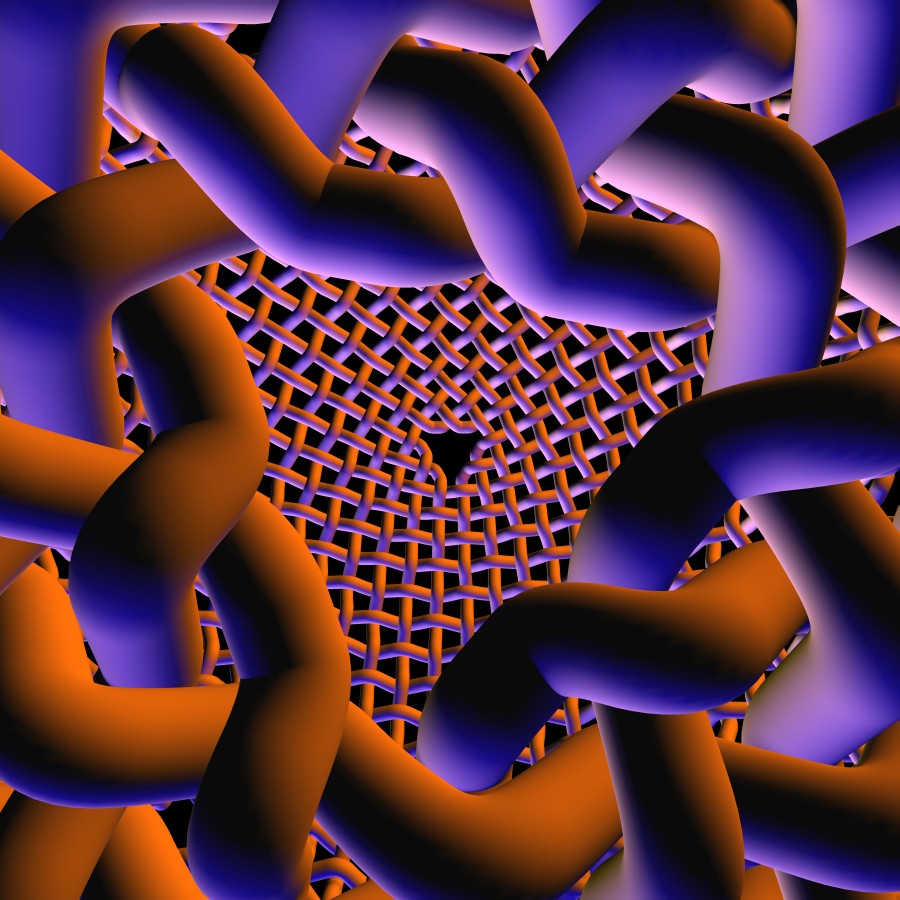
Weaving is most often done with long threads held stretched in parallel in one direction, and other threads are then passed in and out of these threads in the perpendicular direction. The held strings are called the warp, the ones passed back and forth between them are called the weft. In depicting weave patterns, the warp is usually the vertical direction, weft the horizontal.
Different weave patterns can give textiles different properties. In general, the more interweaving, the stiffer the material for the same thread and tightness. The pattern with the greatest interweaving is the common weave, above, where each thread goes over one, under the next, over the next, and so on. The pattern for denim is depicted at right, where we can see weft threads going over one, under the next three, over one, and so on. This is one of the family of twill patterns, which usually have a kind of diagonal aspect given by the weave pattern — which can be seen on close inspection.
Twill patterns are sometimes given by fractions. For example the denim pattern has the code 1/3, which can be read as “one over three under”, because as we follow a weft thread it goes over one warp thread then under three warp threads and so on. The simple weave above has the code 1/1, and a weave sometimes called the basketweave has code 2/2.

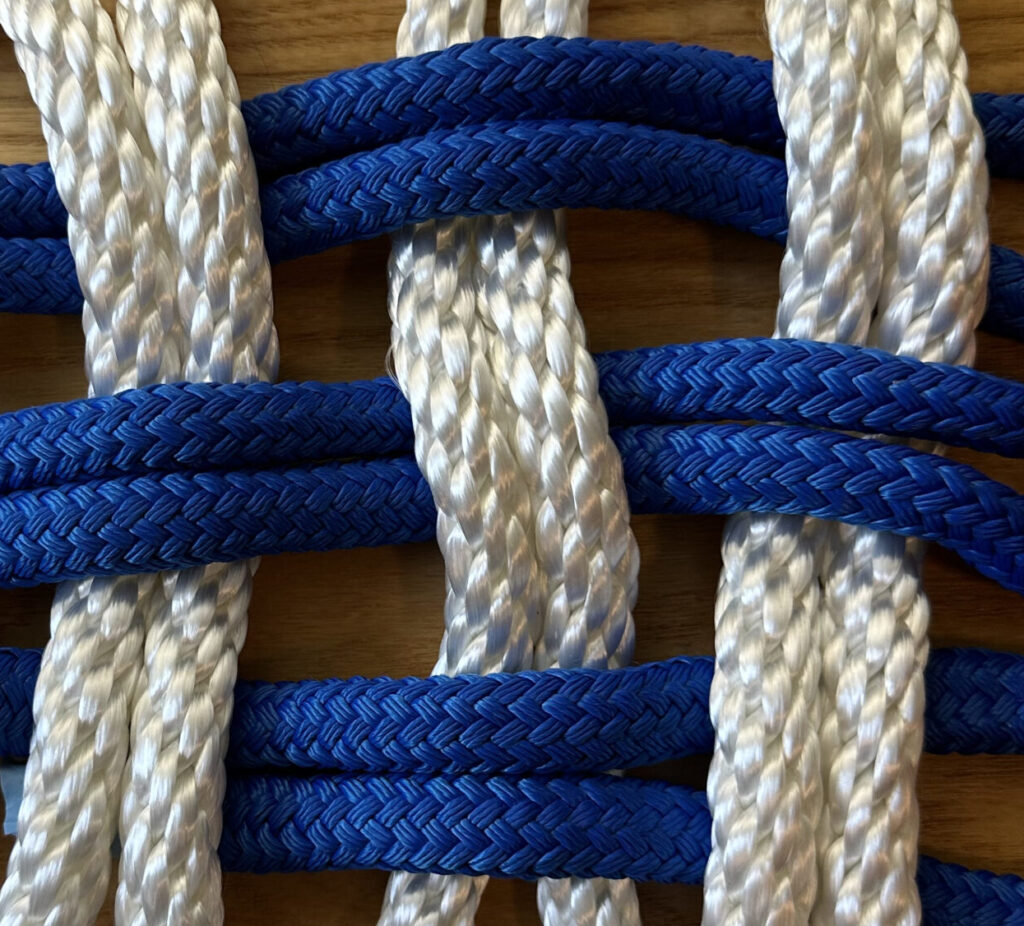
Knitting may look similar to weaving, but in structure it is fundamentally different. A key difference is that weaving patterns are made with the open end of the weft threads — by passing a coiled up length of the weft thread back and forth over and under the warp strings. In knitting, the tangling is done in the middle of the long length of yarn. There is no warp and weft distinction in knitting. Instead a row of tangles is constructed, then a next row is tangled with that row, and so on, and so the fabric is built row by row. No loom is required to hold the warp strings. The basic knitting pattern is to the right, as a diagram and in 3D.

